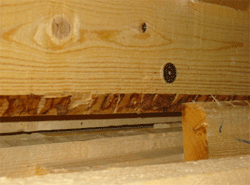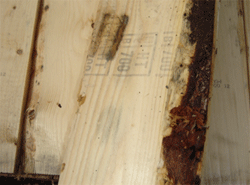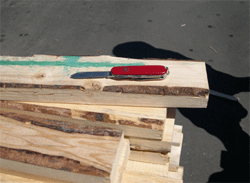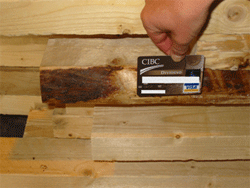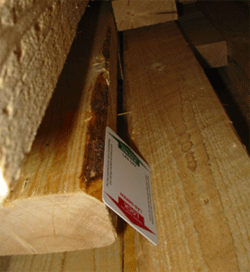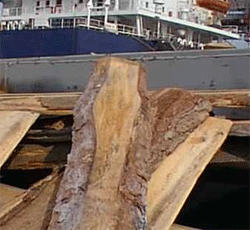The department requires all solid timber packaging and dunnage to meet the bark requirements as defined in the International Standard for Phytosanitary Measures No. 15 (ISPM15) – Regulation of Wood Packaging Material in International Trade.
This standard requires solid timber packaging and dunnage material to be free of bark, however does allow for a tolerance for small pieces of bark that have not been completely removed during milling.
Please note that the department maintains its bark freedom requirement for timber imported as a commodity. Only ingrown bark around knots and bark pockets between rings of annual growth are acceptable for commodity timber.
What is the bark tolerance on timber packaging and dunnage?
Visually separate and clearly distinct small pieces of bark may remain if they are:
- Less than 3 cm in width (regardless of the length)

OR
- Greater than 3 cm in width, with the total surface area (length × width) of an individual piece of bark less than 50 square cm.

Note: This bark tolerance is applicable for timber packaging and dunnage that has been treated in accordance with ISPM 15 as well as being treated in a departmental approved method.
What happens if timber packaging and dunnage exceeds the bark tolerance?
Where bark on timber packaging and dunnage exceeds the bark tolerance limits of ISPM 15, one of the options below will be applied to the consignment to address bark related biosecurity risk:
- Timber packaging or dunnage will be ordered for dry heat treatment, ethylene oxide fumigation or gamma irradiation; or
- Timber packaging or dunnage will be ordered to have the bark removed at a site operating under an approved arrangement. After the bark has been removed, the consignment will be inspected to verify that bark has been removed and that there is no biosecurity risk remaining, such as insects. The removed bark will be destroyed by a departmental approved method; or
- Timber packaging or dunnage will be exported or destroyed.
Note: All options will be at the importer's expense.
For further information regarding the treatments of bark please refer to the Biosecurity Import conditions (BICON) system.
Examples of compliant bark tolerance on timber dunnage1
|
Wane on edge of board is not regulated |
Bark on edge of board is less than 3 cm wide and complies with bark tolerances for wood packaging and dunnage |
|
|
|
Examples of non-compliant bark tolerance on timber dunnage1
|
|
|
1 All photographs published with permission of the Canadian Food Inspection Agency.

